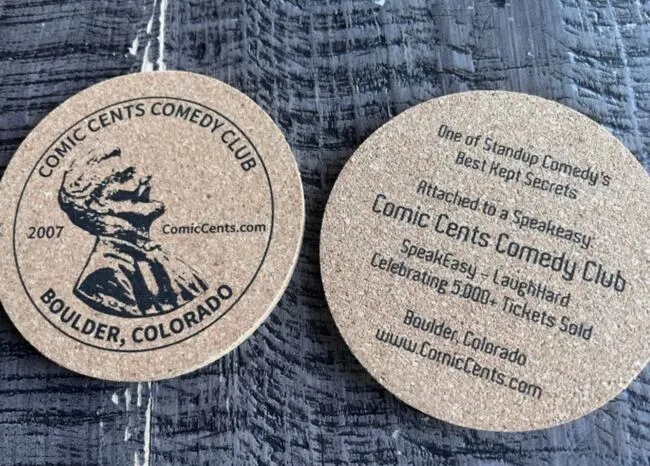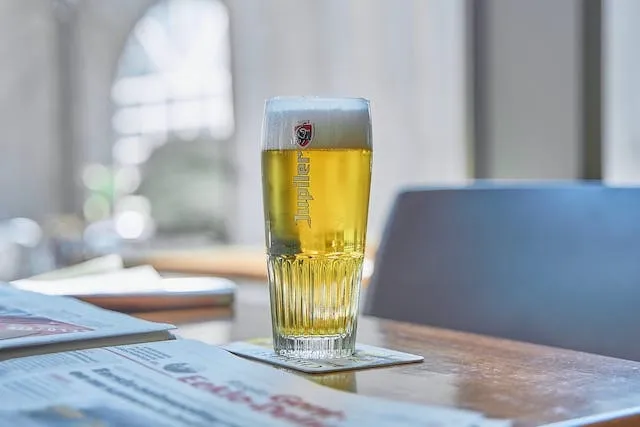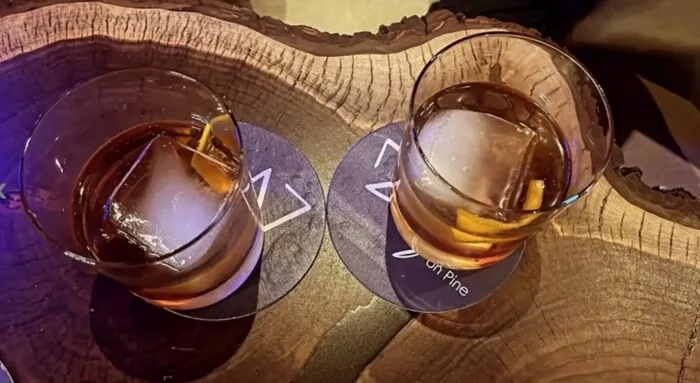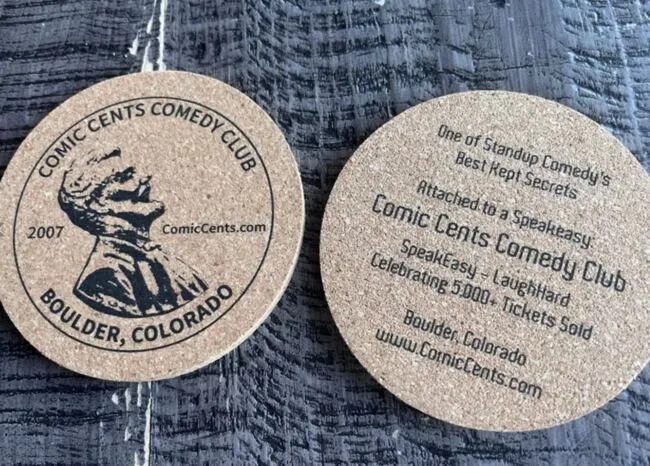Pulpboard Vs Paper Coasters: Differences & Similarities
Dive into this exploration to unravel the similarities and differences between pulpboard coasters and their paper counterparts in this blog post. As common tabletop protectors, these different coaster types share similar purposes, but the materials mean they bring different attributes to the table. Delve into the intricacies of pulpboard vs paper coasters with us, exploring differences in texture, absorbency, aesthetic, and overall performance.
In this blog post, we hope to provide an in-depth understanding of the nuances that set these common coaster materials apart. You will be able to make choices from an informed position to select the optimal coaster for your needs. Discover all you need to know about these everyday essentials to make the right decisions.

Key Takeaways
- Pulpboard is made from compressed paper pulp, while paper coasters are made from layers of paper materials.
- Pulpboard coasters are thick, rigid, and durable. Paperboard coasters are softer, lightweight, and intended as single-use products.
- If you want a long-term, durable solution, choose pulpboard. Paper is better if you want a cost-effective solution for a one-off occasion.
- There are some similarities between the two, mostly around their versatility and biodegradable properties.
- We supply high-quality custom coasters in pulpboard, paper, and a range of other materials to suit differing needs.
Table of contents
-
Pulpboard Vs Paper Coasters: Which Is Better?
-
What Actually Is A Pulpboard Coaster?
-
What Are The Differences Between Pulpboard And Paper Coasters?
-
What Are The Similarities Between Pulpboard And Paper Coasters?
-
Is It Possible To Customize Pulpboard Or Paper Coasters?
-
Are Pulpboard Coasters More Durable Than Paper Ones?
Pulpboard Vs Paper Coasters: Which Is Better?
An examination to determine which is better between paper vs pulpboard coasters comes down to your specific needs and preferences. The fundamental difference between the two materials is encapsulated in the following comparison:
- Pulpboard is made from compressed paper pulp, creating a sturdy feel that is thicker and more durable than paper.
- Paper coasters are often thinner and lighter, making them more economical. They are also more environmentally friendly.
The properties of pulpboard make it a great solution for situations or environments where durability and a premium feel are important. It is a common choice for bars and restaurants, where it can serve as a good alternative to more expensive materials like wood or cork. Paper coasters, meanwhile, are suitable for one-time use where cost-savings are important. We create custom paper coasters to our customers' designs, and they are ideal for events, parties, and promotions.
In summary, there is no ‘better’ choice between pulpboard coasters and paper ones. It comes down to your needs - pulpboard is the stronger option if you need a high-quality feel and greater durability, while paper is great for cost-effectiveness and environmental considerations. Both can offer a great aesthetic, so the decision rests on your intended use and what that requires.

What Actually Is A Pulpboard Coaster?
Pulpboard coasters are a type of drink coaster made from compressed paper pulp. This is generally considered an alternative to wood, and these coasters are known for their thickness, sturdiness, and overall durability. As such, they are a popular choice for various settings, and they are used for protecting tabletops and adding an aesthetically-pleasing accessory to table settings. Pulpboard can withstand moisture and is resistant to warping.
One of the popular aspects of pulpboard coasters is their premium feel, which is why they are so frequently used in bars and restaurants. Thicker than paper, pulpboard provides a substantial protective barrier to ensure drinks don’t damage or stain tables and other surfaces. What’s more, the dense composition of pulpboard makes it a great candidate for adding intricate designs and brand elements. Thus, if you want to advertise, showcase promotional messages, or express creativity on coasters, this is a great material.
Overall, pulpboard coasters offer a superb balance of:
- Durability
- Functionality
- Customization options
We supply custom pulpboard coasters in a range of standard shapes, or you can choose a custom shape for maximum personalization. Your bespoke design is applied using full color imprint, and there are various thickness options to get the optimal product for your needs.
Looking to create custom pulpboard coasters?
Pulpboard is an affordable coaster material and you can create custom designs with us. These disposable coasters can feature vibrant designs and are a little more durable than paper.
What Are The Differences Between Pulpboard And Paper Coasters?
When looking at paper vs pulpboard coasters, the fundamental difference lies in their composition and the manufacturing process to create them. Both are made from paper, but the density of the material is very different.
Due to its composition and the way it is produced, pulpboard is thicker and more dense than paper. This gives it greater strength for enhanced durability and longevity. Pulpboard coasters are popular for their sturdiness and superb moisture resistance, so they are often applied in settings where a durable condensation protection barrier is needed, such as bars and restaurants.
Paper coasters, meanwhile, are typically thinner and lighter. In this context, the term ‘paper’ generally refers to a lightweight material similar to card, so it lacks the density and thickness of pulpboard. It is absorbent, however, which is excellent for protecting against spills and condensation. Both options provide surface protection, but paper coasters are usually seen as a single-use, disposable option.
The primary difference, therefore, lies in thickness and density. Pulpboard offers a more substantial and durable option for coaster production. But both protect your tabletops and offer diverse options for custom coasters, so you need to consider things like:
- Your practical needs
- Budget
- Long-term preferences

Composition Of Pulpboard Coasters
Pulpboard coasters are created using a material called pulpboard. It is a thick, compressed board composed of pressed paper fibers. Its composition is the main difference in pulpboard vs paper coasters, giving it unique qualities that cater to the needs of certain users.
When manufacturing pulpboard, layers of paper fibers are compressed under high pressure to create a dense, rigid material. This can be bought as a blank canvas, pre-cut into coaster shapes, for people who want to make their own custom coasters. The material’s density makes it very effective at resisting moisture, so it is great for condensation and spills, and its durability and sturdiness are ideal for long-term use.
The composition of pulpboard makes it practical and versatile for use as a coaster in various settings. It provides a reliable barrier against beverage-related surface damage, and it retains its shape and structure even when exposed to moisture. All of this culminates in products that are ideal for establishments where durability and moisture resistance are priorities, such as:
- Bars
- Restaurants
- Nightclubs
If you operate a commercial establishment, our custom pulpboard coasters could be your ideal solution for tabletop protection and aesthetic appeal.
Composition Of Paper Coasters
Paper coasters can be made from an array of paper materials and they usually have a light, flexible nature. The composition of paper coasters involves multiple layers of paper that could be standard bond paper, kraft paper, or something else.
The primary materials that make up paper coasters include cellulose fibers derived from wood pulp. In manufacturing, these fibers are processed then pressed into thin sheets, culminating in the lightweight, absorbent characteristics we commonly associate with paper. The specific paper type varies, which has an impact on qualities like:
- Texture
- Thickness
- Overall quality
Paper coasters are a cost-effective and versatile option. They may not measure up in terms of durability when comparing paper vs pulpboard coasters, but they are fantastic for one-off or short-term use. Though their structural integrity fades with exposure to moisture, they are fantastic for applying custom designs and bars, events, and other venues frequently use beer coasters for advertising.
If you only need your coasters for a one-off use, like at a party, an event, or a temporary promotional campaign, paper coasters are a practical choice. Their affordable nature and lightweight design are big factors in their popularity for a number of applications.
What Are The Similarities Between Pulpboard And Paper Coasters?
Despite their differences, pulpboard coasters and their paper equivalents share some similarities as well. Fundamentally, both types of materials are crafted from cellulose fibers derived from wood pulp. The manufacturing process involves pressing these fibers. But the resulting material is thicker and more condensed in the case of pulpboard.
One commonality between the two is versatility. There are many contrasts between paper vs pulpboard coasters, but both are suitable for a range of occasions and provide practical solutions for protecting tabletops. You will see both types of coasters at:
- Restaurants
- Bars
- Events
- Promotional campaigns
Both are, ultimately, disposable and biodegradable. But pulpboard is more durable, meaning it will last longer before it loses its viability for practical use, whilst paper coasters may no longer be viable after a single use.
Customization is another area of common ground for both coaster types. With our service, you can use our service to order custom personalized coasters made from either material and get fantastic products for aesthetic or promotional purposes, as well as tabletop protection.
Whilst there are similarities, pulpboard and paper coasters are quite different. Thickness and durability are the greatest distinctions between them, and pulpboard coasters are the superior option if you need durability and long-lasting protection.

Choose custom paper coasters for an affordable solution
Custom paper coasters are among the most affordable personalized options in our range, and they can display intricate designs for one-off uses in bars and at events.
Learn moreIs It Possible To Customize Pulpboard Or Paper Coasters?
We supply custom pulpboard coasters and custom paper coasters as part of our service. Both are excellent for adding personalized designs, with full color imprints creating a precise, high-resolution image that can contain any combination of colors, text, and graphics. But the customization doesn’t end there, as we aim to provide the best possible value for our customers.
In addition to uploading a custom design to apply to your paper or pulpboard coasters, you can choose the:
- Size
- Shape
- Thickness
- Additional features
You have complete control over both the practical and aesthetic choices for your coasters. There are also many other materials to choose from, so paper vs custom coasters is not the only comparison to explore. And, when you design with us, you can save money by placing a bulk order to fit out an entire event or venue in the most cost-effective way possible.
When it comes to customization, there is also the option of making your own DIY coasters. You can access paper and pulpboard materials for this, and there are many coaster design ideas that feature different materials as well. These are versatile options, and there are many others that allow you to apply your creativity.
Are Pulpboard Coasters More Durable Than Paper Ones?
Generally speaking, pulpboard coasters are more durable than their paper counterparts. The difference in thickness and density is the main determining factor in this. Pulpboard is made from compressed layers of paperboard, giving it a consistency similar to wood. As such, it is thicker and more robust than standard paper coasters.
The superior thickness of pulpboard coasters gives them added sturdiness. This makes them more resistant to wear and tear over time. This is particularly advantageous for settings where they are used a lot, like bustling bars and restaurants. In a comparison of pulpboard vs paper coasters, the latter are thinner products that are not built to withstand prolonged use. They are often designed as disposable products for singular uses, so they are a good fit for one-off events or promotions.
In summary, if durability is your main concern, pulpboard coasters are always a better option than paper ones. Other good materials include:
- Wood
- Bamboo
- Ceramic
- Slate
- PVC
We supply customized coasters in all these materials and more, with a huge amount of customization possible to make them suitable for your needs. If you are seeking coasters for the home, a venue, an event, or any other purpose, we are your one-stop shop for diverse and versatile solutions.
Looking to create high-quality personalized beer mats?
Whatever material you choose, our custom beer mats bring your creative designs to life in vibrant detail. Work with us to create protective and aesthetically-pleasing beer mats.
Frequently Asked Questions About Pulpboard Vs Paper Coasters
Pulpboard Vs Paper Coasters: Which Is Better?
In a comparison of pulpboard coasters and their paper alternatives, the question of which is better is subjective. Pulpboard is more robust and durable, but paper is lightweight and more cost-effective.
What Is The Difference Between Paper And Pulp?
Paper coasters are made by combining layers of paper materials to create soft, lightweight coasters. Pulpboard is compressed paper pulp, formed into thicker products with superior rigidity and durability.